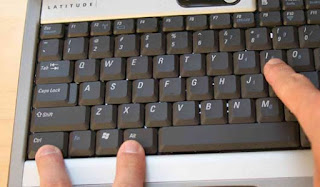Monday, September 5, 2016
Windows keyboard shortcuts overview and complete list
Windows keyboard shortcuts overview and complete list
Windows keyboard shortcuts

Keyboard shortcuts are alternative to the mouse when working in Windows. You can open, close, and navigate the Start menu, desktop, menus, dialog boxes, and Web pages using keyboard shortcuts. Keyboard shortcuts may also make it easier and faster for you to interact with your computer.
General Keyboard Shortcuts
Press | To | |
CTRL+C | Copy. | |
CTRL+X | Cut. | |
CTRL+V | Paste. | |
CTRL+Z | Undo. | |
DELETE | Delete. | |
SHIFT+DELETE | Delete selected item permanently without placing the item in the Recycle Bin. | |
CTRL while dragging an item | Copy selected item. | |
CTRL+SHIFT while dragging an item | Create shortcut to selected item. | |
F2 | Rename selected item. | |
CTRL+RIGHT ARROW | Move the insertion point to the beginning of the next word. | |
CTRL+LEFT ARROW | Move the insertion point to the beginning of the previous word. | |
CTRL+DOWN ARROW | Move the insertion point to the beginning of the next paragraph. | |
CTRL+UP ARROW | Move the insertion point to the beginning of the previous paragraph. | |
CTRL+SHIFT with any of the arrow keys | Highlight a block of text. | |
SHIFT with any of the arrow keys | Select more than one item in a window or on the desktop, or select text within a document. | |
CTRL+A | Select all. | |
F3 | Search for a file or folder. | |
ALT+ENTER | View properties for the selected item. | |
ALT+F4 | Close the active item, or quit the active program. | |
ALT+Enter | Displays the properties of the selected object. | |
ALT+SPACEBAR | Opens the shortcut menu for the active window. | |
CTRL+F4 | Close the active document in programs that allow you to have multiple documents open simultaneously. | |
ALT+TAB | Switch between open items. | |
ALT+ESC | Cycle through items in the order they were opened. | |
F6 | Cycle through screen elements in a window or on the desktop. | |
F4 | Display the Address bar list in My Computer or Windows Explorer. | |
SHIFT+F10 | Display the shortcut menu for the selected item. | |
ALT+SPACEBAR | Display the System menu for the active window. | |
CTRL+ESC | Display the Start menu. | |
ALT+Underlined letter in a menu name | Display the corresponding menu. | |
Underlined letter in a command name on an open menu | Carry out the corresponding command. | |
F10 | Activate the menu bar in the active program. | |
RIGHT ARROW | Open the next menu to the right, or open a submenu. | |
LEFT ARROW | Open the next menu to the left, or close a submenu. | |
F5 | Refresh the active window. | |
BACKSPACE | View the folder one level up in My Computer or Windows Explorer. | |
ESC | Cancel the current task. | |
SHIFT when you insert a CD into the CD-ROM drive | Prevent the CD from automatically playing. | |
Dialog Box Keyboard Shortcuts
Press | To | |||
CTRL+TAB | Move forward through tabs. | |||
CTRL+SHIFT+TAB | Move backward through tabs. | |||
TAB | Move forward through options. | |||
SHIFT+TAB | Move backward through options. | |||
ALT+Underlined letter | Carry out the corresponding command or select the corresponding option. | |||
ENTER | Carry out the command for the active option or button. | |||
SPACEBAR | Select or clear the check box if the active option is a check box. | |||
Arrow keys
Available link for download | ||||